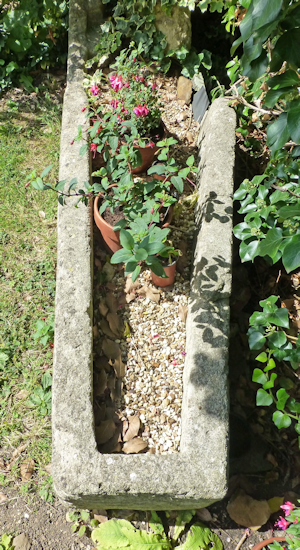 Those of you who call into the Chantry and have had tea or coffee or brought from the weekly market will have spent some time in this historic building.
Those of you who call into the Chantry and have had tea or coffee or brought from the weekly market will have spent some time in this historic building.
However what you see today is not what was there in the past.
The title of this piece is taken from the word used in the regard to the photographs one of which is annotated as the Courtyard and reproduced above clearly showing the building described in letters over the front door as THE CHAUNTRY HOUSE and not CHANTRY.
This photograph from 1933 shows the room in all its splendour, and is entitled, “The Banqueting Hall of the Priests.”
 So next time you visit the room just take a look around and see the changes that have taken place.
So next time you visit the room just take a look around and see the changes that have taken place.
There is one really interesting feature which is no longer present.
This and other photographs were rediscovered thanks to an enquiry made at the Chantry House about the former owner who left it to the care and protection of the Rector and the Churchwardens.
Paul Loveday
Gardens
The base of a limestone coffin can be seen in the garden of the Chantry House and there are probably some who have sat in the garden enjoying a cream tea who have never noticed it.
 It is is very long and narrow with a recess to hold the head of an important Towcester person who was laid in the coffin about 700 or more years ago.
It is is very long and narrow with a recess to hold the head of an important Towcester person who was laid in the coffin about 700 or more years ago.
The coffin was found under the end pillar of south aisle close to the Lady Chapel when the church was undergoing a restoration at the end of May 1883.
I don't know if it was found damaged and in two pieces as it is now or whether a stone lid was found.
Curiously the pillar was built partially on top of it in the 15th century.
I doubt that this was the coffin's original position in the church - despite their weight these coffins tend to have been moved around the interiors of churches during the Middle Ages.
Some stone coffins were not buried but were partially sunk into the floor.
At Clopton in the north of the county is one decorated with incised decoration around the sides suggesting it was above floor level.
Similarly, at Little Woolstone in Milton Keynes, some archaeological investigations over 30 years ago revealed a stone coffin under the church floor which must have been previously partially above ground level as some of the parishioners who sat on it had carved a nine-mens-morris game on the lid.
I have wondered whether the decaying body in such coffins caused problems for those attending the church soon after the burial but have recently found out that some bodies were salted and wrapped in hide before burial.
Needless to say we have no idea who was interred in the Towcester coffin other than it must have been someone of significance.
Brian Giggins


